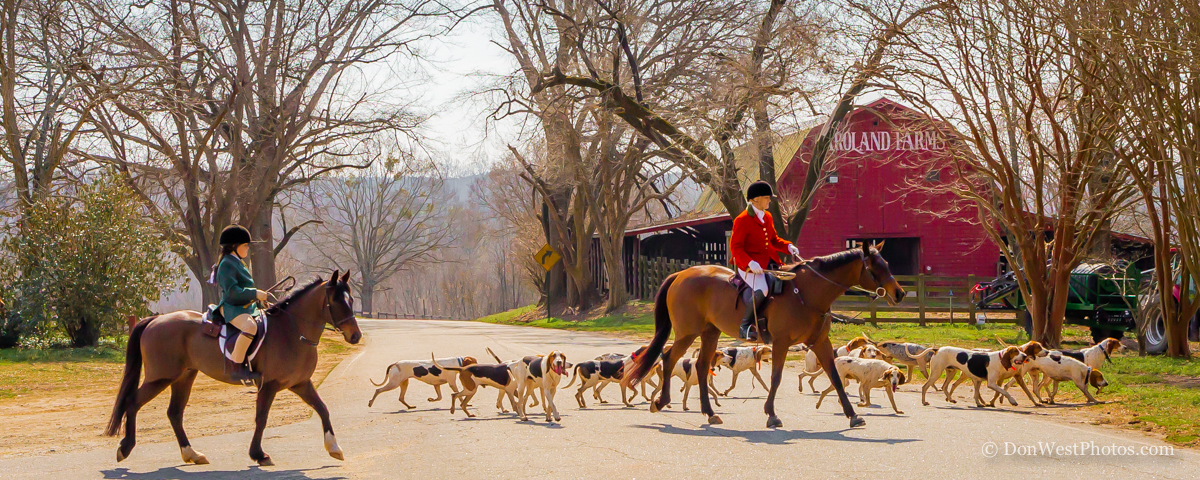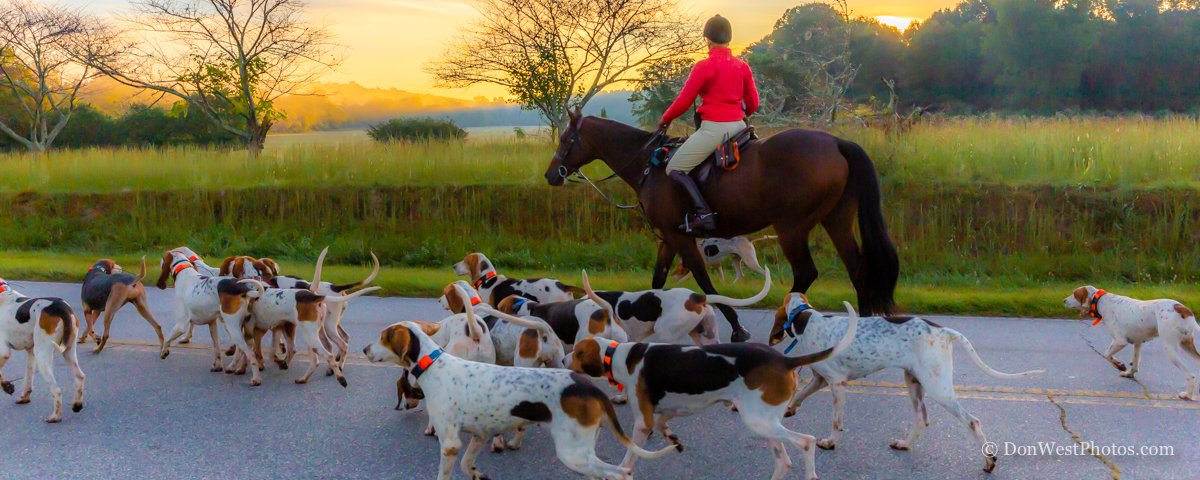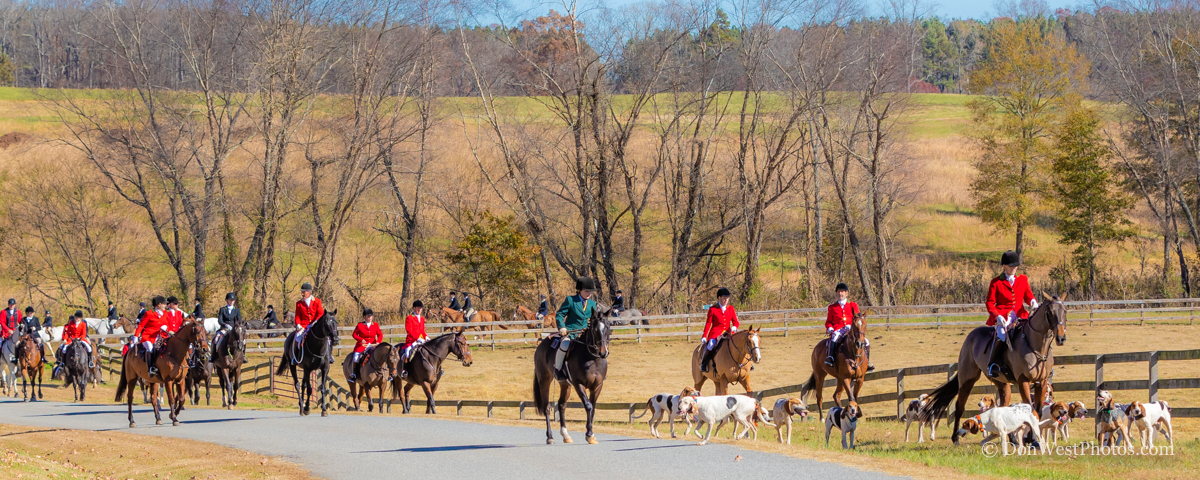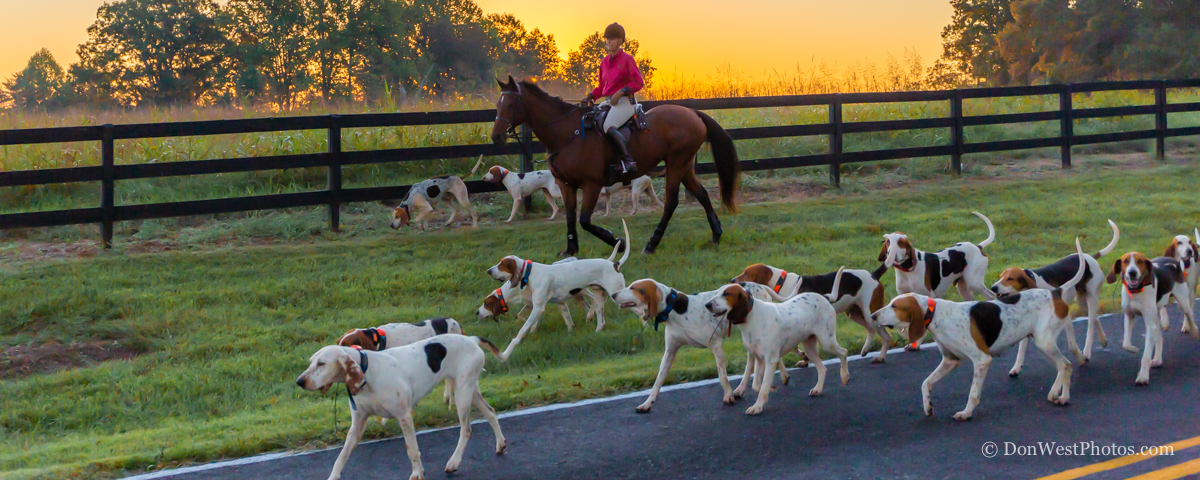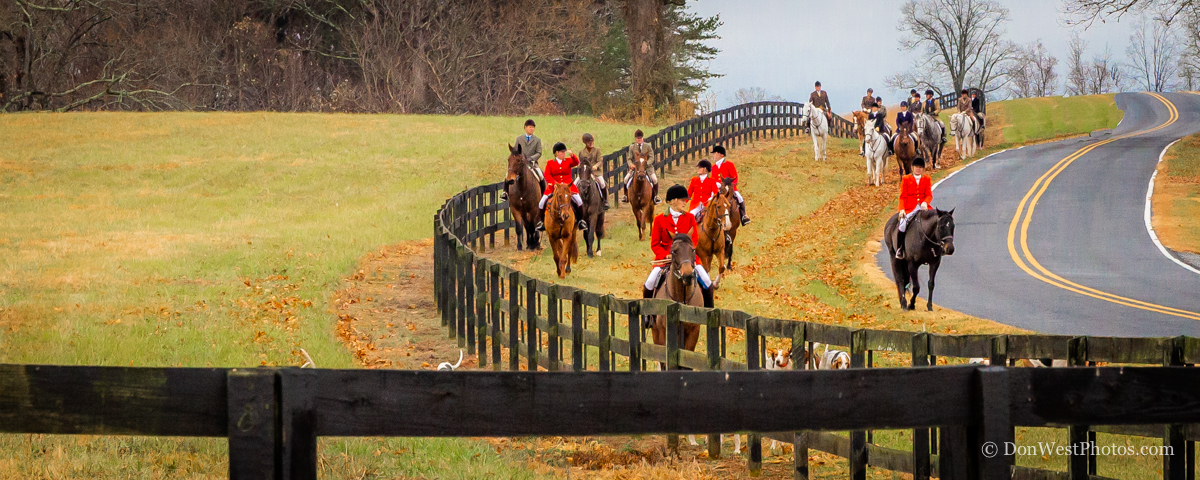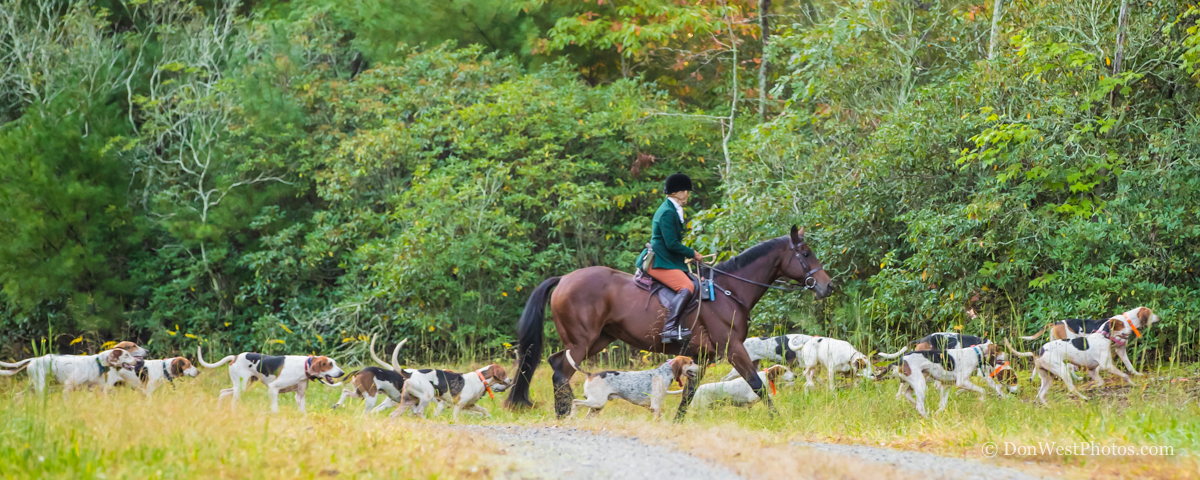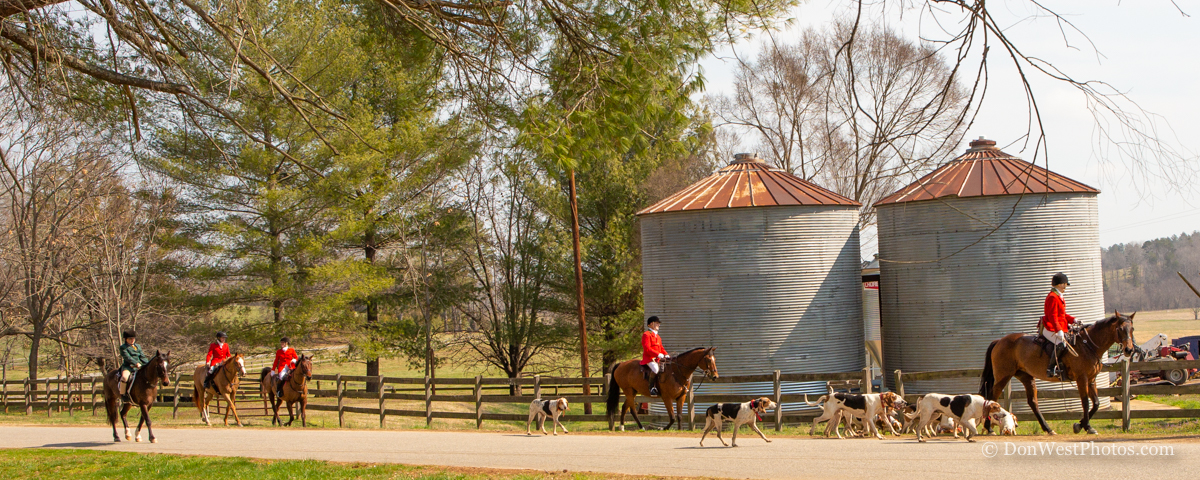The Sport of Foxhunting will depend on the skill and training of hounds, and the ability of the huntsman to work with them. It is also dependent on the Field of riders not to interfere with the fox, the hounds, or the Staff.
The Hunt Meet is the place where the hounds, Staff and Field assemble. Meets are announced to the hunt subscribers through a fixture card. Upon arriving at the meet, it is customary for guests to acknowledge the Masters and the Honorary Secretary, and to pay the capping fee at that time to the Honorary Secretary. (A capping fee is required from all visitors who are not subscribers.) All riders should arrive at the meet at least 15 minutes early in order to have horses tacked and limbered up.
Before attempting to foxhunt in First Flight you should be a capable horseman with the ability to gallop cross-country, jump three-foot obstacles with assurance, and control your horse at all times. You should have a horse that is fit and sound with good manners.
If you elect to Hilltop rather than ride with the Field, you and your horse should meet all of the above requirements, although you are not required to jump. The Tryon Hounds has a regular Hilltop Field with its own Fieldmaster.
Once you are on your horse and hounds are ready to begin the day’s sport, keep your eyes and ears open, your voice down.
The Tryon Hounds pack consists of tri-colored American foxhounds from old Virginia bloodlines. The pack is bred for ability, biddability and uniformity. American foxhounds are renowned for their superb noses and musical voices, providing much sport and excitement for the day’s hunt.
The Horse. To be successful in the hunting field, a horse needs less size (but not less endurance), less conformation (but not less soundness) and less “flashiness” than in the show ring. He needs more room for his heart, lungs, etc., better eyesight, and far more brains. It is most important that he is easily controlled and can be stopped when required.
It is expected that the horse will not kick, but if one does, a red ribbon must be tied on its tail to warn riders to keep their distance. A horse new to the sport is apt to be excited and should be kept at the back of the Field. If it is impossible to control your horse well enough to obey the rules, the horse is a hazard in the hunt field and must be removed at once before causing injury to others. The hunt field is not the place to train a green horse. If your horse forces you to return without finishing the hunt, corrective action should be taken before hunting the horse again.
The hunter’s mane should be pulled short, and braided for opening meet. It is also appropriate to have your horse’s tail braided. A mud tail is suitable to hunting on inclement days. Above all else, your horse should be carefully brushed and cleaned before taken hunting.
Tack. While almost any type of English bridle and bit can be satisfactory for hunting, strong heavyweight bridles are naturally best. Too heavy is better that too light. There is nothing more embarrassing, dangerous and distracting to the rider and the Field than a broken bridle and thus an uncontrollable horse.
When it comes to bits, once again too much is better that too little. Above all else a rider must be able to stop his horse. A full bridle consisting of a curb bit and bridoon makes an excellent hunting bridle. When riding a horse with a soft mouth, the curb rein can be relaxed completely and only used in emergencies, which will save your horse’s mouth and at the same time provide the necessary stopping power should you need it. Martingales are always a good idea and a hunting breastplate with martingale attached makes a very satisfactory arrangement in the hunting field, since it prevents the saddle from sliding back or turning.
Saddles are a matter of personal preference. However, flatter type saddles allow the rider more room and are therefore more comfortable on long days. Saddle pads should be plain and cut close to the shape of the saddle.
It is very important the tack is kept clean and presentable. A suitable preservative should be applied to prevent the leather from drying out, cracking and breaking.
